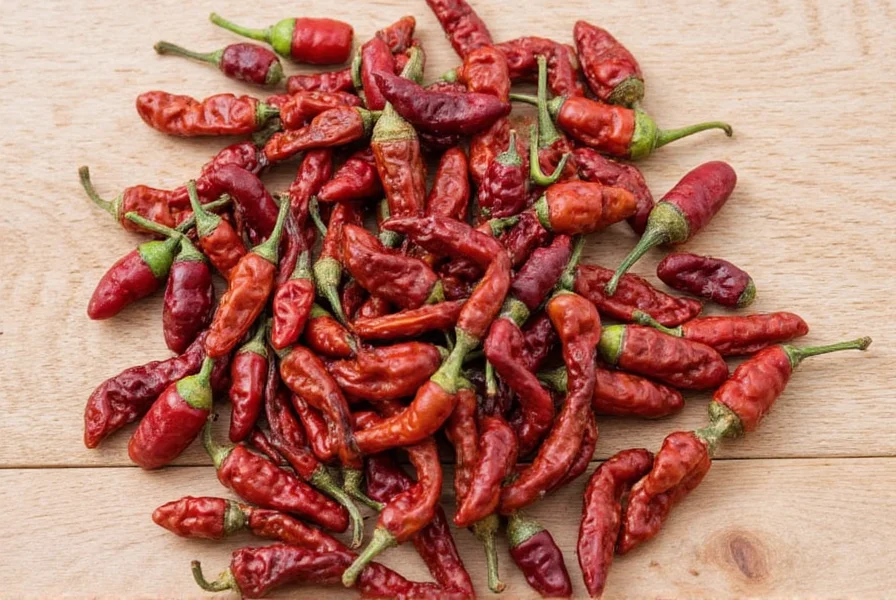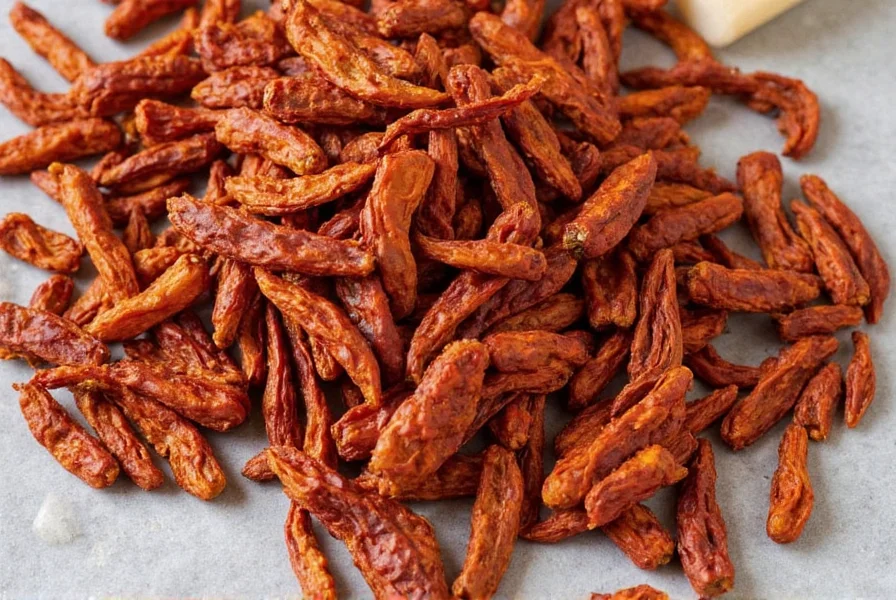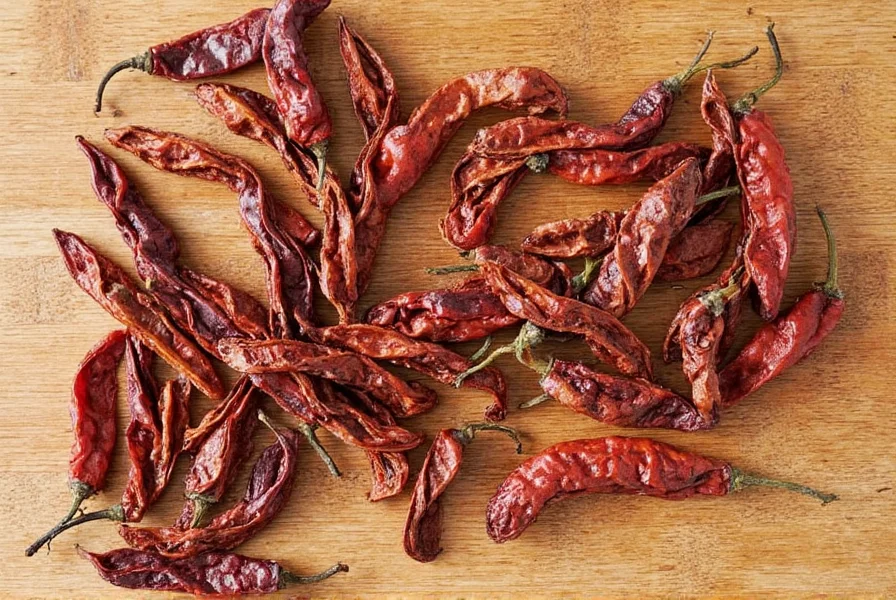| Origin | Flavor Profile | Heat Level (Scoville) | Common Uses |
|---|---|---|---|
| Mexico | Fruity, Smoky, Earthy | 1,000 – 2,000 SHU | Sauces, Stews, Marinades |
If you've ever walked into a spice shop and caught the earthy, slightly sweet aroma of dried ancho peppers, you know how instantly tempting they can be. But if you're new to working with them—or even if you're not—there's more than meets the eye when it comes to these wrinkly red wonders. Whether you're spicing up your next taco night or trying to master traditional mole sauces, this article is your ultimate guide to understanding, using, and loving dried ancho peppers.
What Is a Dried Ancho Pepper?
The dried ancho pepper is the sun-dried version of the poblano pepper, which originates from Mexico. Known for its deep reddish-brown color and wrinkled skin, this mild-to-medium chile brings more flavor than heat—though don't let that fool you; there's still a little kick in there!
Its flavor profile includes notes of dried fruit, coffee, tobacco, and even hints of chocolate. This complexity makes it a staple ingredient in Mexican cooking, especially in sauces like mole and adobo.
5 Essential Tips for Using Dried Ancho Peppers
1. Always Remove Seeds and Membranes First
While the flesh of the ancho contributes sweetness and depth, the seeds and inner membranes pack most of the heat. Removing them gives you better control over spiciness—especially if you're serving kids or folks who prefer milder flavors.
2. Toast Them Before Use for Maximum Flavor
Toasting dried ancho peppers in a dry skillet for about 30 seconds per side enhances their natural oils and intensifies their rich, smoky undertones. Don't skip this step—it really wakes up the flavor!
3. Soak in Hot Liquid, Not Cold Water
Rather than soaking in cold water (which just rehydrates), try hot broth, citrus juice, or even beer for extra flavor infusion. Let them soak for 20–30 minutes until soft enough to blend into sauces or pastes.
4. Blend with Complementary Ingredients
When making sauces or purees, pair dried ancho peppers with garlic, cumin, cinnamon, tomatoes, or raisins. These ingredients highlight their natural sweetness and create balance in your dishes.
5. Experiment Beyond Traditional Mexican Dishes
Don't limit yourself! Try incorporating rehydrated ancho into pasta sauces, barbecue rubs, or even soups and stews for a rich, spicy-sweet undertone that adds character.

How Dried Ancho Peppers Compare to Other Chiles
If you're curious about how anchos stack up against other popular dried peppers, here's a quick comparison chart to help you decide which one to reach for next time you're in the kitchen:
| Pepper Type | Heat Level (SHU) | Flavor Notes | Best For |
|---|---|---|---|
| Ancho | 1,000–2,000 | Sweet, Fruity, Smoky | Mole sauces, chili, marinades |
| Guajillo | 2,500–5,000 | Berry-like, Tea notes | Salsas, tacos, enchiladas |
| Pasilla | 2,500–3,000 | Grassy, Raisin-like | Mole negro, stews |
| Chipotle | 5,000–10,000 | Smoky, Spicy | Barbecue, salsas, soups |
| Cascabel | 1,000–3,000 | Nutty, Nutmeg-like | Roasted sauces, garnishes |
As you can see, dried ancho peppers offer a unique flavor profile that's ideal for those looking to add warmth and depth without overwhelming heat.
Buying Guide: Choosing the Best Dried Ancho Peppers
Not all dried ancho peppers are created equal. Here's what to look for when shopping and why quality matters:
What to Look For:
- Color: Deep red or dark brown hues indicate maturity and flavor concentration.
- Texture: The skins should be thin but pliable, not brittle or overly leathery.
- Aroma: A rich, earthy scent with hints of dried fruit is a good sign.
- Size: Medium to large peppers tend to have more flesh and less waste.
Where to Buy:
- Mexican Markets: Often carry the freshest stock and regional varieties.
- Specialty Grocery Stores: Check organic or gourmet sections for premium options.
- Online Retailers: Great for hard-to-find products, but read reviews before purchasing.
Popular Brands & Their Features:
| Brand | Features | Pros | Cons |
|---|---|---|---|
| La Costeña | Traditional Mexican brand, whole dried anchos | High quality, consistent size and flavor | May be pricier than generic brands |
| Goya | Widely available, affordable option | Easy to find, decent flavor | Some batches may be drier than ideal |
| Spice Islands | Organic, packaged for shelf life | Premium packaging, organic certified | Smaller quantity, higher price per ounce |

Delicious Recipes Featuring Dried Ancho Peppers
Ready to get creative? Here are a few crowd-pleasing recipes that make the most of dried ancho peppers:
1. Classic Mole Poblano
This traditional Mexican sauce combines dried ancho, mulato, and pasilla peppers with almonds, sesame seeds, chocolate, and spices. Serve it drizzled over chicken or enchiladas for a luxurious, complex dish.
2. Ancho Chile Rubbed Chicken Tacos
Marinate chicken thighs in a paste made from soaked and blended ancho peppers, garlic, lime, and cumin, then grill or sauté until golden. Top with avocado crema and pickled onions for a zesty bite.
3. Smoky Ancho Chili
Add depth to your favorite chili recipe by blending soaked anchos into the tomato base. Pair with kidney beans, ground beef, and a splash of coffee for richness.
4. Ancho Tomato Jam
A sweet and savory condiment perfect for charcuterie boards or as a glaze for roasted meats. Combine rehydrated anchos, ripe tomatoes, sugar, and vinegar for a flavor-packed spread.
How to Store Dried Ancho Peppers Properly
Dried ancho peppers can last for months if stored correctly. Here's how to keep them flavorful and ready to use:
- Whole Peppers: Keep in an airtight container away from light and moisture. Stored properly, they can last up to a year.
- Ground Powder: Grind dried anchos into powder and store in a tightly sealed jar in a cool, dark place for up to six months.
- Rehydrated Anchos: Freeze any leftover soaked peppers in ice cube trays with some of the soaking liquid for future use in sauces or stews.
Pro Tip:
Add a desiccant packet (like the ones found in snack bags) to your storage container to absorb excess moisture and prevent mold growth.
Frequently Asked Questions About Dried Ancho Peppers
Final Thoughts on Making Magic with Dried Ancho Peppers
Dried ancho peppers might not scream "spicy," but their nuanced, layered flavor deserves a spotlight in your kitchen. From subtle warmth to bold sauces, these peppers bring both comfort and complexity to everyday meals.
Whether you're roasting, blending, or grinding, taking the time to toast and rehydrate your anchos pays off in big flavor dividends. And with a bit of practice, you'll start recognizing the difference between a high-quality pepper and a lackluster one—trust us, it makes all the difference.
So go ahead, grab a handful of dried ancho peppers next time you're at the market, and let your inner spice wizard run wild. Your taste buds will thank you.











 浙公网安备
33010002000092号
浙公网安备
33010002000092号 浙B2-20120091-4
浙B2-20120091-4